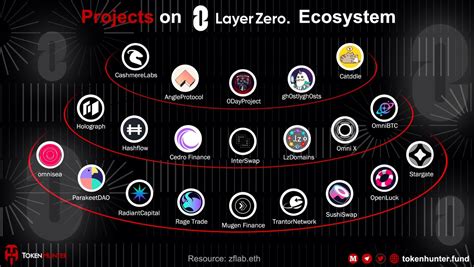Layer 1 Solutions: Addressing Blockchain Scalability
layer solutions 1: Addressing the scalability of blockchain in the cryptocurrency era
The increase in cryptocurrency caused a new era of decentralized peer-to-peer transactions. However, as the number of users and transactions increases, the complexity of the maintenance of the scalable blockchain network. One of the key challenges is to solve the scalability problems that make it difficult to process transactions on existing blockchain platforms.
What is scalability in blockchain?
Scalability refers to the ability of the blockchain network to process a large number of transactions at a reasonable time, without prejudice to security or decentralization. Traditional blockchain protocols, such as Bitcoin and Ethereum, struggled with scalability problems due to their limited block size, high transaction costs and complex consensus algorithms.
layer solutions 1:
To meet the challenges of scalability facing the cryptocurrency, several layer 1 solutions have appeared. These solutions are aimed at improving the efficiency of transactions on existing blockchain platforms by increasing the number of transactions that can be processed at a given period.
- Proof of work (POW):
–
goal: Miners use energy consumption and computing power to solve complex mathematical problems that confirm transactions and create new blocks.
–
Advantages:
provides security through cryptography and decentralized control.
–
Disadvantages: Important energy -consuming, which leads to the concerns related to the environment.
- Paliko proof (POS):
–
Target: Walidacists are selected based on the amount of cryptocurrency they keep in their wallets, instead of relying only by computing.
–
Advantages: More energy -saving compared to POW and scalable for high transactions.
–
Disadvantages: slower transaction processing due to the need to verify validation through the network.
- Palika delegated proof (DPO):
–
goal: Users vote for delegates who have the largest number of coins, and each delegate manages their own “place” on the web.
–
Advantages: More efficient than traditional voting systems and supports more transactions to the block.
–
Disadvantages: Less safe compared to POW due to potential gaps in the voting mechanism.
- SHARDING:
–
Target: Divide the block chain into smaller, independent frags (chains), each of which is able to independently process transactions without disturbing the general network.
–
Advantages: increases scalability, while enabling the operation of many chains, improving the ability to handle large volumes of transactions.
–
Disadvantages: More complex and intensive computation.
- layer scaling solutions 2:
– These solutions are aimed at improving the performance of the blockchain network by introducing new protocols or modifying existing to increase bandwidth without decentralization.
– Examples include optimism, polygon (previously the MATIC network) and arbitrum.
Challenges and restrictions:
While these layer 1 solutions offer promising alternatives for traditional consensus algorithms based on POW, they still face serious challenges:
–
Energy consumption:

Energy required for many of these protocols is significant, which can be expensive for users and harmful to the environment.
–
complexity: Implementation and maintenance of blockchain network with improved scalability of scalability requires significant knowledge and resources.
–
Safety hazards: with the potential of more transactions in a larger network, there is an increased risk of security violation.
Application:
The search for scalable solutions is a constant challenge in the world of cryptocurrency.
